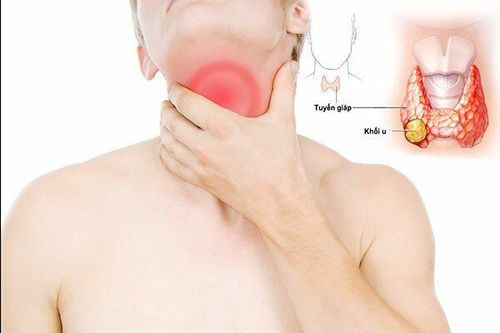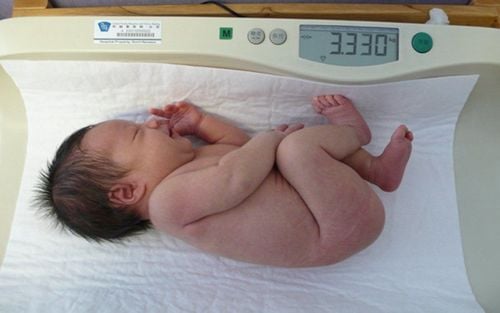This is an automatically translated article.
The article is professionally consulted by Associate Professor, Doctor, Doctor Nguyen Thi Hoan - Head of Pediatric Outpatient Department - Pediatric Center - Vinmec Times City International HospitalShort stature is the term doctors use for a child who is short (height below the third percentile for age and sex on the growth chart). Doctors monitor these numbers over time to see if a baby is growing healthy.
1. Distinguish between the concept of dwarf and short
Short: Children below 3 percentiles ( -3SD); Short stature: The child is shorter than the average child from -1 to -2SD. Children with dwarfism can be born with congenital diseases (shortness due to lack of growth hormone, total hypopituitarism, hypothyroidism, primary dwarfism or congenital metabolic disorders such as: Mucopolysaccharidosis, Achondroplasia, renal rickets, etc.). .), chromosomal abnormalities (Turner syndrome, Seckel Cell disease...)
Short stature is common in chronic diseases such as: Chronic kidney disease, fetal or postpartum malnutrition, Celiac disease. ..
2. Is dwarfism sick?
Being too short doesn't necessarily mean your child has health problems. The child may have inherited short stature from one parent, or this is a "late bloomer" who will reach average height by puberty.But sometimes poor growth can also be a sign of a health problem that needs attention. If you're concerned that your child is significantly shorter than his peers, or if his child's growth rate seems to suddenly slow down or stop altogether, see your doctor.
The doctor will look for health problems that can affect the child's growth rate and stature, such as:
Celiac disease Thyroid problems Growth hormone deficiency Chronic disease: Pink anemia Sickle cell disease, Turner syndrome (due to a lack of chromosomes in girls), Cushing's disease (caused by too much of the hormone cortisol). In fact, any chronic illness can affect a child's growth rate and stature.

3. Examination and testing for children with dwarfism
Height is often a genetic issue, so your doctor will take a close look at your family history, including the average height of your child's siblings, parents, grandparents, aunts and uncles. Your doctor needs to know if anyone in your family has health problems related to short stature, as these problems can also be inherited.You need to provide the doctor with a record of your child's height and weight to check his growth rate and determine if he is always shorter than his peers. Other necessary information includes the child's diet and any symptoms (if any).
During the physical exam, your baby may have blood tests and other tests, sometimes also an X-ray of the wrist or hand to see if the bones have matured as normal for age. If a hormone problem is suspected, the child will be referred to a pediatric endocrinologist for further evaluation.
If the tests show a growth hormone problem, the endocrinologist may have the child do a stimulation test to measure the pituitary gland's ability to secrete hGH. First, the child will be given an injection of a drug that causes the endocrine system to produce hGH. After a few hours, the doctor will take blood samples from the IV vein at predetermined intervals. The blood will be analyzed to determine if your baby is producing normal growth hormone levels.

4. How to increase height for children
A person's height is influenced by 32% nutrition, 25% living, 23% genetics and 20% exercise. In addition to genetic factors that cannot be interfered with, you can influence nutrition, exercise and daily living habits to stimulate children's height.
4.1. During pregnancy and after giving birth During pregnancy, mothers need to pay attention to their nutrition, because they will determine a lot of the weight and height of the baby. Therefore, before and during pregnancy, as well as breastfeeding, mothers need to eat properly, supplement with adequate protein, iron, calcium, folic acid, ... for the fetus to develop healthy and achieve healthy growth. standard since in the womb.
4.2. Eat enough nutrients The nutritional needs of children will vary depending on each stage of development, but in general, daily meals need to be sufficient:
Protein (10 - 15%): Change dishes continuously with meat, fish, shrimp, crab, tofu... Starch (60 - 65%) Fat (10%) Essential vitamins and minerals: Calcium, vitamin D, K2, A, E, C, zinc and selenium... Meals must ensure nutritional balance and variety of dishes, should not eat too much or omit any substances. Every day, in addition to 3 main meals, you should supplement your child with about 2-3 snacks to activate metabolism and add energy to work effectively throughout the day.
Parents do not forget to consult a nutritionist to supplement calcium appropriately, avoiding the harmful effects of excess calcium. Effective and safe sources of calcium include: milk, fish, tubular bones, crabs, seaweed... Children also need to regularly exercise, run and jump outdoors to synthesize vitamin D naturally from sunlight, Helps absorb calcium more efficiently.

4.3. Scientific and healthy activities
In order to stimulate the child's height to reach the ideal level, it is necessary to adhere to the following healthy living habits:
Limit exposure to technology Using phones, watching TV or playing games for too long not only creates bad posture , hindering bone development but also affecting children's eyesight and intelligence.
Sleep at the right time, get enough sleep The time when the bones grow strongest is when the child is sleeping soundly, especially from 11pm to 3am. At this time, the pituitary gland is active and secretes a lot of hGH hormone. Therefore, it is necessary to put your child to sleep before 10pm and 8 hours a night, limit light and noise, use comfortable mattresses, pillows and sleepwear, and avoid playing electronic devices before sleeping.
Living in the right posture Walking upright, keeping your head and neck straight when studying, not bending over or lying on the table ... are also very important notes for increasing children's height.
Creating a quality living environment Children living in underdeveloped socio-economic conditions, polluted environment, lack of clean water... are prone to malnutrition and stunting. Therefore, parents should try to create conditions for their children to live in a healthy environment with adequate conditions for comprehensive development. On the other hand, cigarette smoke also inhibits hormone secretion, affects bone growth, is detrimental to the health and height of children.
4.4. Active exercise Scientific exercise not only helps to stimulate the child's height, but also increases the resistance, keeps the child healthy. Exercises suitable for each age include:
Children under 6 months old: Mothers should not let the baby lie in one place too much, but give the baby a full body massage, especially stroking the legs, stroking the hands and rubbing the back. for better blood circulation. From 6 - 12 months: Encourage and support baby to roll / turn over, crawl, stand and take their first steps. From 3-4 years old: You can teach children gentle exercise movements and encourage them to walk regularly to strengthen muscle activity, as well as stimulate the development of bones and joints. From 5 to 10 years old: This is the period of pre-puberty, the skeletal system has developed more firmly. Parents can encourage their children to practice jogging, swimming, aerobics... to stimulate bones and joints. Puberty: The time when the height grows the most, can increase to 10-15 cm per year with proper care. Encourage your child to actively play sports such as swimming, volleyball, basketball, pull-ups, and jumping rope...

Every child has certain stages of growth and growth. Therefore, parents need to grasp and apply effective measures to increase height for children, help children develop healthy physically and intellectually.
There are many causes for children to be short, in addition to genetic causes, other factors can affect and change the height development in children. Therefore, it is very important to examine, adjust nutrition, change lifestyle to promote height growth for children. Therefore, when seeing that a child has a slow growth in height compared to other children, parents should take the child to a medical center to examine and find out the cause.
Please dial HOTLINE for more information or register for an appointment HERE. Download MyVinmec app to make appointments faster and to manage your bookings easily.
Note: This article is part of the Vinmec International General Hospital System's Awareness Program on Growth Retardation, with the support of Novo NordiskReference source: babycenter.com














